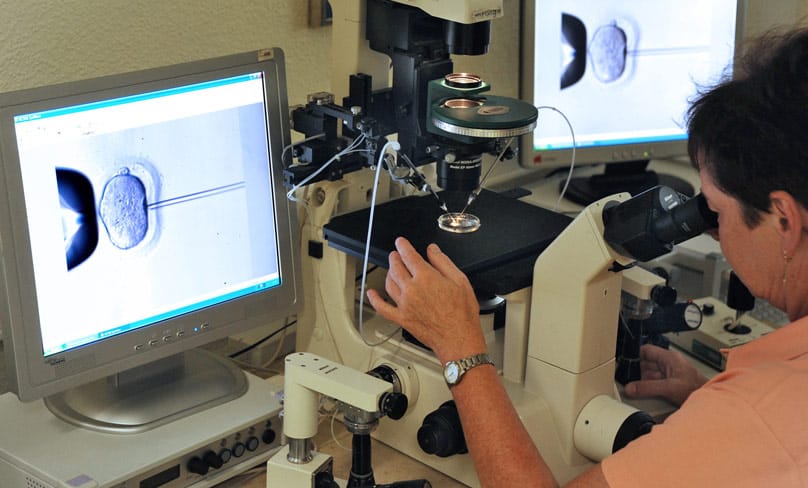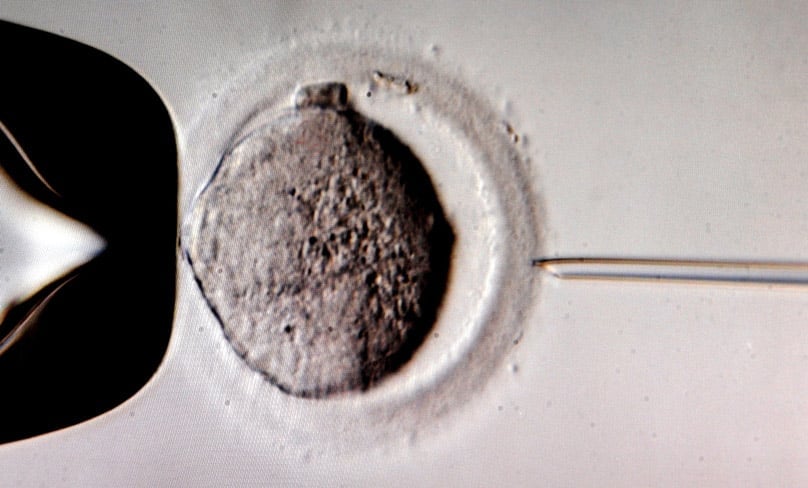
“Dear Father, A friend recently asked what I thought about allowing people to “adopt” unwanted frozen embryos stored in IVF clinics. I don’t know anything about this. Can you fill me in?”
The background is that in the In-Vitro-Fertilisation (IVF) process, multiple embryos are produced by uniting an egg and a sperm in a glass dish, only some of which are implanted in the woman’s body.
Some of the others are discarded because they contain faulty genes and others are frozen and kept in storage for future use, especially if the implanted embryos do not result in a pregnancy and birth of a child. As regards the morality of IVF, see my answer in Question Time 3, q. 407.
What can happen is that if the woman has a child or children with the implanted embryos or if for any other reason, including a marriage breakup, she does not want to use the other embryos, they remain frozen in storage.
We should remember that an embryo is a human being in an early stage of development and it is entitled to all the care we would give to a baby or an adult.
According to figures released by the U.K.’s Human Fertilisation and Embryology Authority in 2015, over 3.5 million embryos were created in the UK from August 1991 to 2015.
Of these, only 1.4 million were implanted, one sixth of which resulted in a pregnancy, 1.7 million were discarded unused and a further 23,500 were discarded after being taken out of storage. Some 840,000 were put into storage and some 5,900 were set aside for scientific research.
What is to be done with embryos which have been kept in storage and are unwanted? One solution is to allow couples to adopt an embryo or embryos and implant them in the woman’s body in the hope that they will result in the birth of a child. In this way, the embryo has at least some chance of being born.

The Vatican’s Congregation for the Doctrine of the Faith addressed the question in the Instruction Dignitas personae in December 2008.
It said: “With regard to the large number of frozen embryos already in existence the question becomes: what to do with them? Some of those who pose this question do not grasp its ethical nature, motivated as they are by laws in some countries that require cryopreservation centres to empty their storage tanks periodically. Others, however, are aware that a grave injustice has been perpetrated and wonder how best to respond to the duty of resolving it” (n. 19).
After ruling out for obvious reasons using these embryos for research or for the treatment of disease, or allowing infertile couples to use them to resolve their infertility, the document makes reference to “embryo adoption”: “It has also been proposed, solely in order to allow human beings to be born who are otherwise condemned to destruction, that there could be a form of ‘prenatal adoption’. This proposal, praiseworthy with regard to the intention of respecting and defending human life, presents however various problems not dissimilar to those mentioned above. All things considered, it needs to be recognised that the thousands of abandoned embryos represent a situation of injustice which in fact cannot be resolved” (n. 19).
Obviously, if the frozen embryos are not implanted in a woman, they would have to be thawed out and allowed to die.
The document quotes St John Paul II, who called for a halt to the production of human embryos, “taking into account that there seems to be no morally licit solution regarding the human destiny of the thousands and thousands of ‘frozen’ embryos which are and remain the subjects of essential rights and should therefore be protected by law as human persons” (Address, 24 May 1996; n. 19).
After the Instruction was made public, Archbishop Rino Fisichella, President of the Pontifical Academy of Life, said in a press conference that the new Vatican document was not ruling out embryo adoption altogether, but that the Vatican was moving towards that position because such adoptions involve prospective parents in an immoral process.
At present, Catholic ethicists are divided on the issue, including on whether infertile couples should be allowed to adopt an embryo.
In view of this, a couple would be free to adopt an embryo if they so desired. In the US, over one thousand babies have already been born through embryo adoption.
